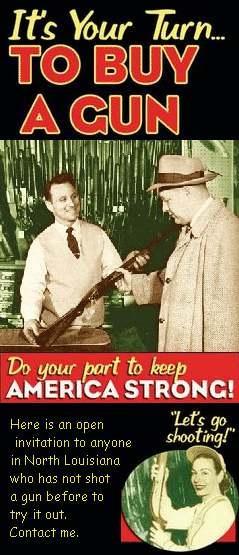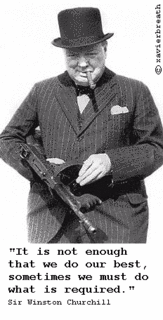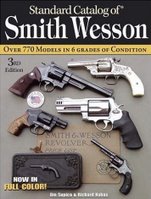I rediscovered photography with the purchase of a digital SLR at one of the local pawn shops. My blog has become a combination gun,

bicycle, and photo blog it seems. Over the past few days I brought some out of the closet, and I opened up a few cardboard boxes containing the cameras I used throughout my life.
When I was a boy, my mother owned this Kodak Baby Brownie. Some of my first pictures were taken with it, both snapped of me and by me. It's certainly beat now, with the lip broken off the front, but I still keep it. I decided to take it, and a few others out to document my journey to where I am now in photography.
My next camera was a Kodak Instamatic. I no longer have it, but the memories of flash cubes are still bright.

As I became a little older, I inherited my father's Yashica twin lens reflex.
The Yashica was my secret passion. It was hopelessly outdated by the time I received it, and I used the Instamatic for Cub Scout trips and such, and learned how to operate the big complicated green camera alone. The Yashica A-44 was a manual camera that taught me how to manipulate light, shutter speeds and apertures. The Yashica became an old friend, and I made a few good photographs with it. Developing the film was a problem, but I would collect Coke bottles, and trade them in at the local drug store for processing. I became a common sight riding my bike into town with a load of Coke bottles in the basket, a knapsack full of more bottles on my back, and a roll of film in my pocket.

When I reached High School, I purchased my first 35mm SLR camera, a
Minolta SRT102. Now that I was taking taking photos in public with increasing frequency, I wanted a camera that I could control, and one that did not look thirty years old. Most high school kids are like that, I suppose. I saved up a lot of lawn mowing money, and a lot of gas pumping money to purchase my first Minolta. It came with a 50mm lens, and I quickly learned to enjoy the benefit of interchangeable lenses.
When I went to college, I had the opportunity to upgrade my Minolta camera when a friend decided he needed a Nikon.

He sold me his
Minolta XG1 for chickenfeed and a six pack. While I was happy with the deal, I found that I liked the familiarity of the SRT 102 better. When a photographer is unable to evaluate the results of his labor for several days, familiarity is a good thing. Although I purchased it as an upgrade, the XG-1 received comparitively little use, and remained my back-up camera for years.
When I left for the Navy, I was unable to take along my camera. All of my belongings were stored in a mini warehouse, and I did not want to unpack anything when I came back home for a three day liberty after boot camp. I was making money, and when I decided to purchase a new camera

from the base exchange, the choice was easy.
I had Minolta lenses already, so I chose a
Minolta X-700. My X-700 became my constant companion on liberty all over the far east and Australia. I carried it with a 50mm f1.2, a 24mm f2.8, and a 50-135 zoom, all Minolta lenses. I learned from the mistakes of other sailors who cheaped out on aftermarket lenses. Twenty five years later, after being slung over my shoulder on four continents, my Minolta lenses are as solid and clear as they ever were.
I purchased another camera in Yokosuka Japan. It, too, was a Minolta. Not wanting to ruin my X-700 taking photos in the salt spray off the ship, a
Minolta Weathermatic was the natural choice.

This point and shoot was a 35mm camera as well, making processing a snap. I frequently took it diving, and learned that photographing fish is not as easy as it may seem. I got some great shots of me and my friends though. Eventually, the salt environment got to it. Although I religiously rinsed the Weathermatic in fresh water after diving, the on/off switch finally broke off from the salt environment. After four years of hard use, it was retired.
In Hong Kong, on Cat Street, used cameras were every where. I purchased a couple of junk
Olympus Pens and a Mamiya as curios, but never used them. They remain my souvenirs of Cat Street.



My Canon Cannonet was given to me by a Japanese friend. 

My Nikkormat FTn was also purchased on Cat Street in Hong Kong. It followed me around the far east beside the Minolta X700. The Nikkormat already had significant brassing and a few bumps and bruises when I purchased it. It gained a few more as I transferred to liberty boats and to piers. It was and is a tough camera. It is solid enough to drive tent stakes, knock out a mugger, or chip ice if the need arises. Its still clicking away with a manual focus 50mm lens, although the meter had given up the ghost long before I purchased it. Thankfully the Nikkormat camera led me to Nikkor glass while I was still in the Orient.
When I left the Navy, I learned that a photography professor at a local college had passed on and I went to the resulting estate sale.

I found his
Nikon F2A with a motor drive up for grabs, along with several lenses. I grabbed quickly.
I had learned that this Nikon was the workhorse of photojournalists. Photographers were still shooting slides and saving negatives. Auto focus was in it's infancy, and digital photography for the masses was still just a dream. I just wanted a motor drive and seized the opportunity to obtain an entire professional quality Nikon set-up for a little more than a motor drive for my X-700 would cost.
At the same time, I was learning how to create websites on the internet. Publishing photography online was a chore. I would shoot, develop and scan each image.

It was time consuming. My first digital camera was a Sony Mavica FD.
I was looking for ease of use, not megapixels. Popping a floppy disk out of the camera and into my floppy drive was as simple as it could get. I actually went through three Sony Mavicas. They all worked fine. I used them for wound documentation as well as internet publishing. I could snap them up cheaply in pawn shops, and having a spare always seemed like a good idea.
Finally, the day came when my old computer monitor requred replacement. I opted for a slick new fangled flat screen, so I could gain some extra room on my desk. Suddenly, the resolution of the Mavica was noticeably lacking compared to the photographs of others.

I began to look more into the megapixel thing. I researched online, and I went back to the pawn shop. I came home with a Canon Power Shot A520.
The four megapixels of the Canon is puny by today's standards, but I was mainly interested in the glass, the method of file storage and transfer, and of course, availability at a cheap price. The point and shoot Canon fit the bill. Indeed, most of my photos on this blog were taken with the Canon.
I was learning to love the spontenaity of digital photography, and the freedom from film.

Still, I wanted to be able to fully control my images, and I wanted interchangeable lenses. Finally, the day arrived when I spotted a
Nikon D-200 in a pawn shop. After a bit of negotiation, the black beauty was mine. It carried more megapixels than I dreamed of, and best yet, I could swap Nikon glass, including making use of the lenses I had. Digital photography has effectively replaced film for me now. The ability to shot without hesitation, to simply delete inferior images at no cost, is a freedom that I have longed for. A digital camera such as this may not necessarily make better photographs, but I believe it will make me a better photographer.
Lens Inventory:
Minolta SR mount
50mm ƒ1.4
135mm ƒ2.8
Minolta MD mount
24mm ƒ2.8
50mm ƒ1.4
50-135mm zoom ƒ3.5
Tonika 70-210mm ƒ4-4.5
Nikon F mount
24mm ƒ2.8 (AI conversion)
35mm ƒ2.8
50mm ƒ1.4
45mm GN ƒ2.8
50mm ƒ1.4 Series E
50mm AF ƒ1.8
85mm AF ƒ1.8
Vivitar Series 1 90mm ƒ2.8
300mm ƒ4.5
500mm ƒ8 reflex
24-50 AF zoom ƒ3.3-4.5
18-70mm AF zoom ƒ3.5-4.5
35-70mm AF zoom ƒ3.3-4.5
70-210mm AF zoom ƒ4-5.6
Nikon F mount non-AI
50mm ƒ1.4
50mm ƒ1.4
50mm ƒ1.4
50mm ƒ2
Labels: Cameras

This lens also designed to use gloves. Featured a large aperature ring with a f=Stop Range from F2-F16Has a coal black finish and Unique focus free operation with a very unique rear element as seen in photos. Has unique metal caps that are also unique only to this excessivly rare lens. Few in existance. This is Number 19. Many have been lost and this one has been sitting on a NASA Shelf a long long time. Few People have ever seen and very little is known about this lens, Perhaps the rarest Nikkor.

























































































